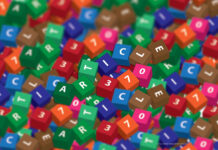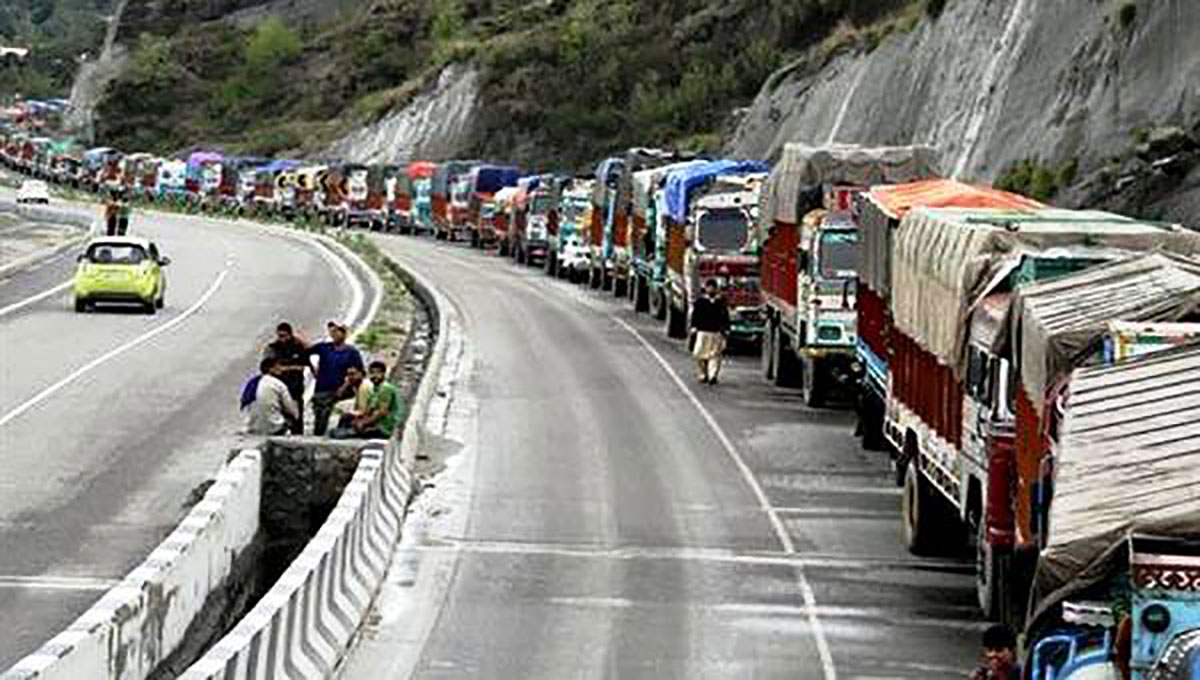In a place where traffic accidents have become a part of life, proper emergency care is still virtually non-existent. Syed Asma reports on the dismal state of Kashmir’s ambulance services.
A group of about a dozen people encircle a small white van, shouting and crying. Among the crowd, there is one man who seems to talk sense. “Let me go with this guy and a doctor. The rest of you will arrange a separate vehicle for yourself and follow us. Is that fine?” he shouts, he gets no answer; he shouts again, no reply again. The driver then signals to the doctors and moves on in full speed with the ambulance siren on. The ambulance heads towards SKIMS from SMHS.
This Maruti van ambulance carried a man who was hit by a Tata sumo. He was badly injured, with had head injuries as well. He was referred to SKIMS for immediate treatment but seeing the space in the ambulance his attendants were aghast and got into an argument with the driver over the space in the ambulance. They also took time to decide who will accompany the patient in the van. They probably advised the driver to take the larger one, Tata 407 ambulance but it wasn’t available in the hospital. It was sent to Lal Ded Hospital with a patient.

The small Maruti van ambulances were introduced after the year 2000.
Most of these small van ambulances are seen on the city roads. They were introduced after observing heavy traffic on roads and their zero widening, a health official says.
But authorities seem to ignore the element of comfort for a patient.
“The patients are not only uncomfortable in these match boxes (referring to van ambulances) but they are also prone to infection as the back door has to remain open. In Kashmir, most of the men are above five feet. Most the patients, apart from children, have their legs hanging from these seats,” says Rashid Ahmed, an ambulance driver. “Sand and the dust easily come in from that open back door where the patient is lying.”
SHMS, one of the biggest hospitals in the state, has seven vans and two Tata 407 ambulances. Typically, in one shift, a van and a Tata 407 are used. In an emergency, all are put to use.
During the last two periods of unrest in Kashmir, these carriers were used to transporting the bodies of the injured and the dead.
“There have been many incidents where these small vans have had problems even in getting started after carrying more than three bodies- dead or injured,” says Noor ud din. “The driver literally has to fight (dub paivaan karin) with it to get started.”
It’s quite problematic to run these on roads during winter months as well.
“Earlier we had 4×4 vehicles which could even pass through mountains in dry, rainy or snowy weather, but these vans are a pain, a pain for patients as well as for drivers,” says Mohammed Ashraf. These can be good for a children’s hospital but not for a hospital like SHMS or Lal Ded, he opines.
“During the militancy, I once carried 60 dead bodies from the hospital to their homes but then we had big ambulances. It was winter and that too at midnight,” says Mohammed Shafi, an ambulance driver, “this van cannot even carry six bodies together.”
Mohammed Ashraf, an ambulance driver, says it is difficult for a patient in the small van ambulances to manage a comfortable space. Even getting equipments and oxygen cylinders, is cumbersome.
The small vehicles have the excuse of limited space, but the larger ones having enough space also lack all facilities.
Big Mistakes
These Maruti van ambulances are pain, but the bigger Tata 407 ambulances don’t provide any better relief either apart from the large space they provide.
These are simple carriers which, on several occasions, have contributed to the death of the patients, but no hospital in Kashmir has maintained any kind of record in this regard. Patients who arrive in Srinagar hospitals are either treated if they survive, or are declared “dead on arrival” if they have succumbed on their way; without any efforts made into investigating the cause of death.
“Poor, pathetic, bad are really understatements to describe the conditions of carriers [ambulances] that we possess. The patient in it is left to the mercy of no one, not even God,” says Dr Saleem ur Rehman, Director Health. “Yes, it needs to be worked on but it’s not something that can be replaced over night, we need some time. We have in collaboration with NHRM finalized a project in which we will replace the whole fleet of ambulances but it will take some time.”
“The white trucks that we have do not in any case qualify to be called ambulances,” says Dr Mushtaq Ahmed, a practicing doctor in SKIMS. “If the ambulances had proper assistance, patients could have survived in many instances.”
Dr Riyaz Ahmed Rangraiz, Deputy Medical Superintendent SKIMS says there is a time period called a ‘Golden Hour’ for a patient, during which time a patient can be closer to surviving or to dying. However, in Kashmir, this ‘Golden Hour’ is lost in these trucks, where in most cases, not even an oxygen cylinder is available.
Basic Requirements
The ambulances should ideally have should have every equipment which a causality department in a hospital has. It should have a comfortable seat, ambu bag, a mask, endotracheal tube for intubation in case of pulmonary arrest, defibrillators for rescuing cardiac arrests and emergency medicines. Additionally, ambulances also need to have splints for immobilization of fractures, blood transfusion facilities and ECG machines. Well equipped ambulances need well trained paramedical staff as well, which doctors say are lacking in Kashmir.
Dr Saleem, Director Health agreeing to the importance of trained paramedical staff says he is working on their training and has till now trained more than 500 paramedical officers. He had also invited Dr Eric Daniel from ICRC Geneva to train the paramedical staff on basic life saving techniques.
The current ambulances have uncomfortable and torn seats which are immobile and a patient is dragged on to a stretcher when shifted to a hospital. This is what is available for the general public in Kashmir.
“The condition of the ambulances is so bad that it is hard to believe that it carries people to save their lives or as a purpose of resuscitation,” says Rakesh Kumar, a CRPF personnel who had come along with his colleague in their ambulance. “I thought we have parked our ambulance in a junkyard.”
Rakesh had parked his ambulance parallel to a Tata 407 ambulance which was issued to SMHS in 1998 and is still in use, the other Tata 407 was issued in 2000.
“You must be joking that this is an ambulance. Ours is much better. We got it from Haryana. We have even better than these,” says Rakesh Sharma pointing towards his Swaraj Mazda ambulance.
His ambulance had four comfortable padded seats, instead of the two that a general public Tata 407 ambulance has. It also has an air condition and a separate heater with a wash basin, a first aid kit and many other essentials. “A comfortable perfect match to tackle emergencies”, he says.
He had come with his colleague who needed a stomach wash due to an overdose of alcohol the previous night.

In Kashmir, the latter is used for both, critical and non-emergency patients, in most cases. Kashmir has three critical care ambulances, one for the Governor, one for the Chief Minister and another kept in SMHS. That makes it one for the general public and that too is only available in the city and not in the peripheries.
“Many times patients have died in my ambulances. Mostly, pregnant women and severe accident causalities on the highway,” says Riyaz Ahmed, an ambulance driver who has been driving ambulances for last 25 years now.
Improved Infrastructure Ahead?
Highways are the worst places for accidents and there has been a rise in the figures of accidents as well. Keeping this in mind, and in view of upgrading the health services in Kashmir the state government is starting a facility of comprehensive emergency pre hospital ambulance transfer which, by dialing 108, will be just a call away.
“108 is essentially introduced to minimize the life loss due to road accidents especially on highways. Seeing a huge number of deaths in the road accident this service is a necessity,” says Dr Saleem ur Rehman, Director Health Services.
“As most accidents happen on the national highways, the service would first be provided to them and a few of the other more accident prone areas like Doda, Poonch and Rajouri.” In the first phase about 25 ambulances will hit the roads in Kashmir and in the next phases the number of ambulances will increase gradually to a three digit figure.
In this project, ambulances will be kept just 20 Kms away from each other and will have both basic as well as advanced life support.
“These will be the best available in the state,” says Dr Saleem.
Another similar project planned by the government is a helpline service. After dialing 104, an individual will be able to talk to a properly trained professional. “He will have a proper protocol developed by WHO which will help them diagnose the disease of the caller,” Dr Saleem says. “The success rate of these diagnoses is about 80 percent.” Authorities also assure the services will elevate health care of the valley to a completely different level. The project is with bureaucrats and is in need of just a signature in order to begin. The project will be executed within three months of signing the contract, says Dr Saleem.















